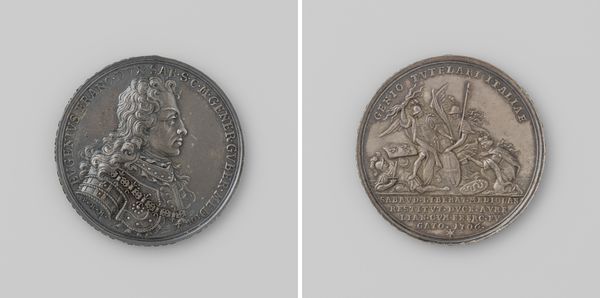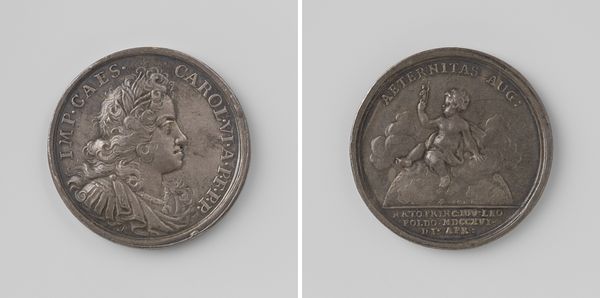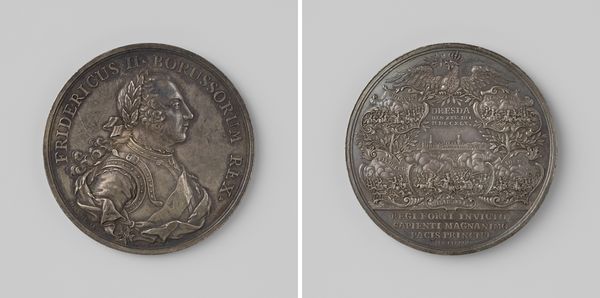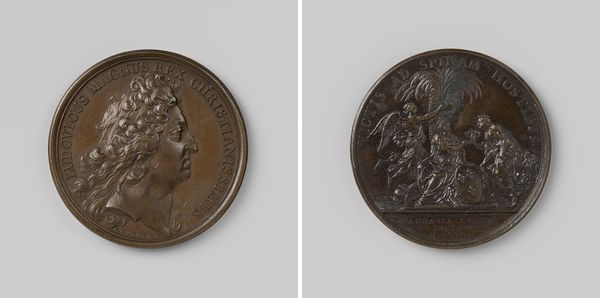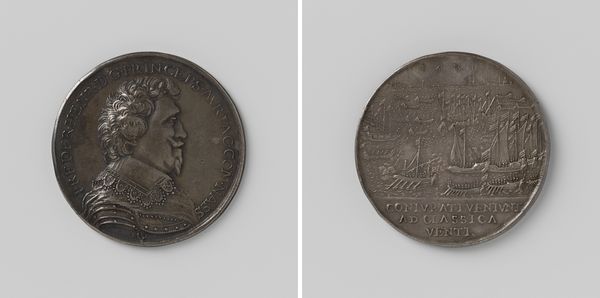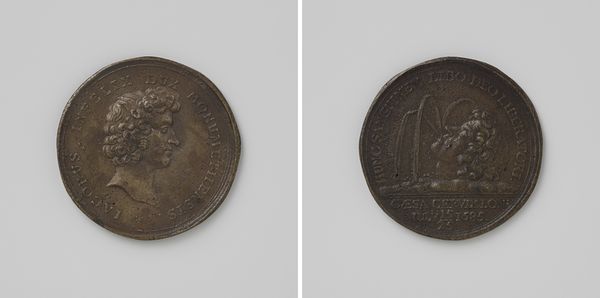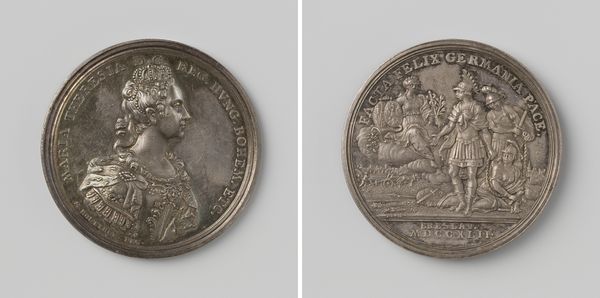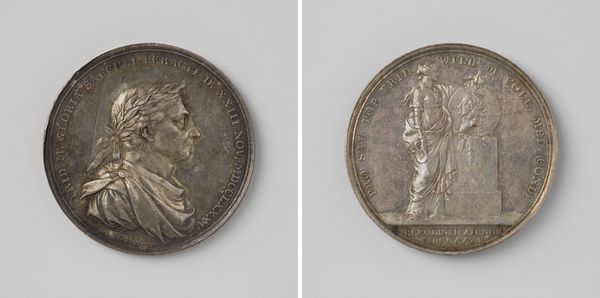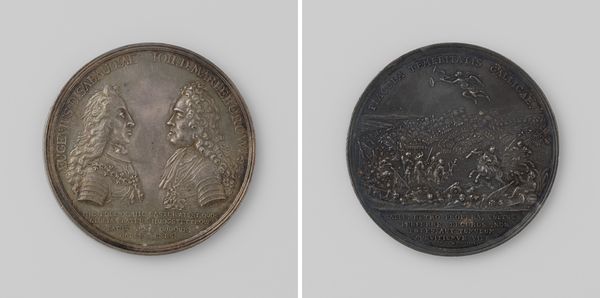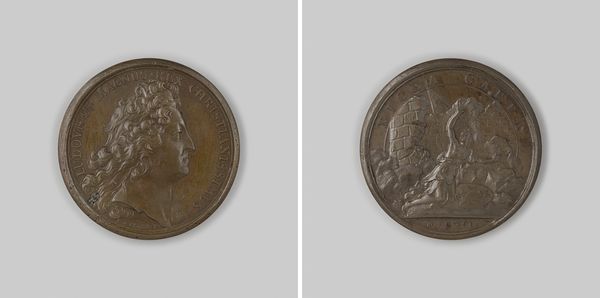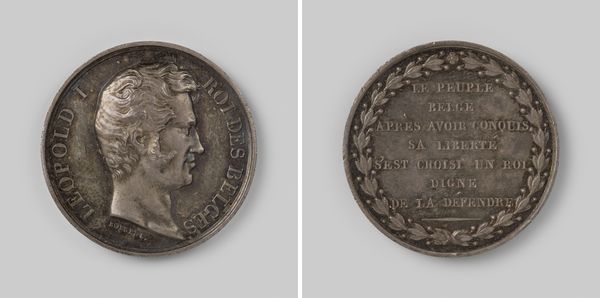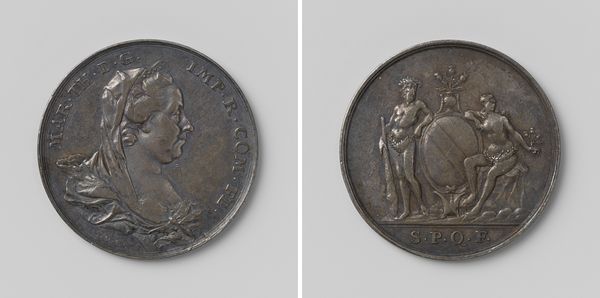
Pelgrimstocht van Maria Elisabeth, landvoogdes der zuidelijke Nederlanden naar Montaigu 1739
0:00
0:00
metal, relief, sculpture
#
portrait
#
baroque
#
metal
#
sculpture
#
relief
#
sculpture
Dimensions: diameter 3.4 cm, weight 11.15 gr
Copyright: Rijks Museum: Open Domain
Curator: This is a relief, a medal actually, rendered in metal around 1739 by Jacques Roettiers II. The piece commemorates the pilgrimage of Maria Elisabeth, governor of the Southern Netherlands, to Montaigu. Editor: My first thought is how meticulously detailed this tiny scene is. The scale is impressive – everything from the drapery to the minute facial features is rendered with sharp clarity, despite its probable size. It feels…solemn. Curator: Yes, the composition is quite purposeful. Note the dual nature: one side presenting a classical portrait of the governor and on the opposing side, a devotional tableau brimming with Baroque energy. It juxtaposes earthly power and spiritual humility through allegorical imagery. Editor: Absolutely. On the portrait side, the use of Latin emphasizes authority. The classical bust motif reinforces her status. Then on the devotional side, observe how Roettiers positions the supplicants and floating cherubs directing our eye to the focal point: a hanging votive lamp. The contrast between the two is really dynamic. Curator: The pilgrimage itself was a significant event. Montaigu was—and remains—a popular pilgrimage destination for those seeking Marian intervention. The medal serves as a historical document, legitimizing Maria Elisabeth’s piety and, by extension, her political power. Editor: Right. So the material matters, too, doesn’t it? Metal implies permanence, ensuring that her spiritual journey would be memorialized, even disseminated through replicas. Furthermore, consider the act of producing these en masse. They function almost like modern political propaganda. Curator: Precisely. Beyond the surface aesthetics, this small relief functions as a concentrated blend of art, faith, and politics, echoing the Baroque sensibilities of that time. It also acts as a historical marker, solidifying the socio-political climate of the Netherlands at the time of Maria Elisabeth’s rule. Editor: Looking closely has highlighted the intricate craftsmanship and the multifaceted symbolic load this relief carries, underscoring the delicate negotiations between worldly authority and spiritual devotion in the Baroque era. It prompts reflections on representation and political piety then and even today.
Comments
No comments
Be the first to comment and join the conversation on the ultimate creative platform.
